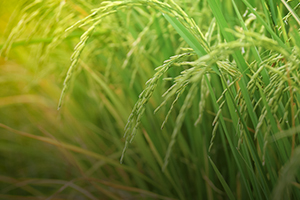Golden Rice

After more than a decade of data collection, Golden Rice has finally overcome a major regulatory hurdle, as it was cleared by the U.S. Food and Drug Administration to be safe for consumption. The grain, which was first presented as proof-of-concept research in 2000, is genetically modified to contain beta-carotene — a compound that is converted by the body into vitamin A, and is essential for proper function of the immune system. Vitamin A deficiency (VAD) is a major cause of childhood blindness and a significant health problem in developing countries.
Research has confirmed that the beta-carotene in Golden Rice can be converted efficiently into vitamin A without overdosing since the human body only converts what it needs and excretes the rest. Data also suggests that one cup consumed daily could supply up to 50 percent of the recommended daily allowance (RDA) of vitamin A.
Although Golden Rice has been a source of controversy and criticism from anti-GMO activists, the need to address VAD worldwide is clear. It is estimated that VAD accounts for one to two million deaths each year, as well as 500,000 cases of irreversible blindness. And because many of the countries affected rely on rice as a dietary staple, Golden Rice is viewed as an easy and inexpensive solution. The U.S. is the fourth country — behind Canada, Australia, and New Zealand — to approve the product.
For information: The Golden Rice Project; website: http://www.goldenrice.org/index.php